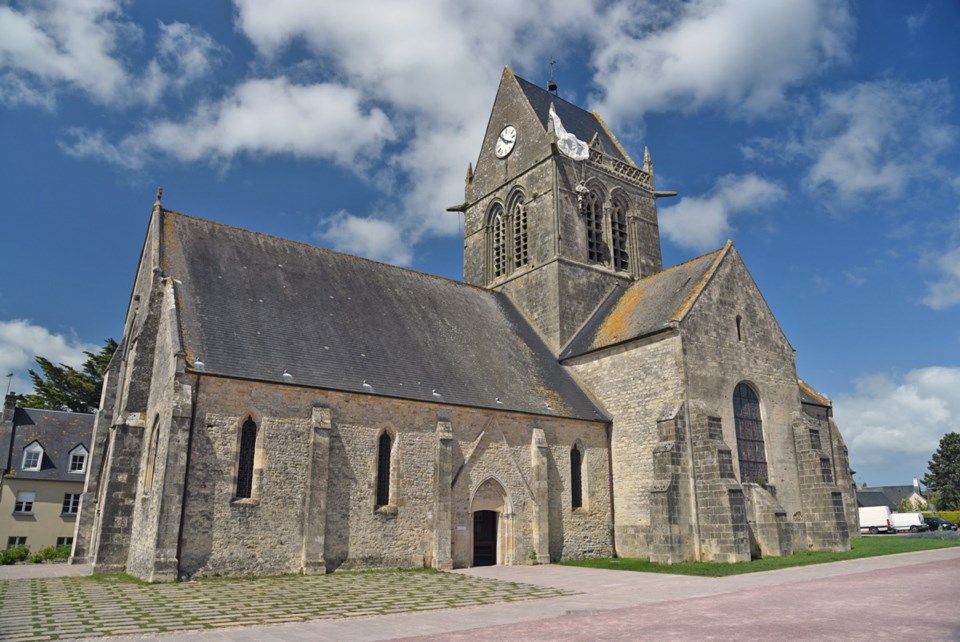Most Americans visiting FranceŌĆÖs D-Day sites focus, understandably, on Omaha Beach ŌĆö where thousands died on June 6, 1944. But if youŌĆÖre planning to visit Normandy, donŌĆÖt miss the other American landing site: Utah. ItŌĆÖs the westernmost of the five sectors of the Norman coast given code names by the Allies. British and 91įŁ┤┤ troops landed at Gold Beach, Juno Beach and Sword Beach.
Utah Beach, added as a landing site late in D-Day planning, proved critical. This was where two U.S. paratrooper units (the 82nd and the 101st Airborne Divisions) dropped behind enemy lines the night before the invasion. It was essential that the paratroopers hook up with the invading forces and then push up the Cotentin Peninsula to the port city of Cherbourg.
Utah Beach itself was taken in less than an hour at the cost of 194 American lives. While the brutality on this beach paled in comparison with the carnage on nearby Omaha Beach, most of the paratroopers landing at night missed their targets ŌĆö causing confusion and worse. After the landings, the Germans put up a fierce counterattack, and it took three weeks to liberate Cherbourg.
The excellent Utah Beach Landing Museum is the best place to start a visit to the area. Built around the remains of a concrete German bunker, the building nestles in the sand dunes with floors above and below beach level.
Displays show innovative equipment from both sides of the conflict: the remote-controlled Goliath mine, the Water Buffalo and Duck amphibious vehicles, the wooden Higgins landing craft and a fully restored B-26 bomber ŌĆö one of only six in existence.
Upstairs is a large, glassed-in room overlooking the beach. From here, you can peer over re-created German trenches and get a sense of what it was like to defend against such a massive onslaught.
Outside the museum, itŌĆÖs a short hike up to a small bluff thatŌĆÖs lined with monuments to the military units that participated in the fight. A gun sits atop a buried battlement under the flags, part of a vast underground network of German defences. And all around is the hardware of battle, frozen in time.
A short drive away is the simple Romanesque church at Angoville-au-Plain. Here, two American medics ŌĆö Kenneth Moore and Robert Wright ŌĆö treated the wounded while battles raged only steps away. The medics (who had also parachuted in) set up shop in this small church, and treated both American and German soldiers for 72 hours straight, saving 80 lives. German patrols entered the church several times, but the medics insisted that the soldiers park their guns outside or leave the church ŌĆö incredibly, they did.
If you visit the church, look for several wooden pews toward the rear that still have visible bloodstains. Find the stained-glass window that honours the American medics and another that honours the paratroopers. After surviving the war, both Wright and Moore returned to the U.S. WrightŌĆÖs wish was to be buried here; you can find his grave in the church cemetery.
The village of Ste-M├©re Eglise, 15 minutes west of Utah Beach, was the first town to be liberated by the Americans. It was in and near this town that many paratroopers, facing terrible weather and heavy anti-aircraft fire, landed off-target.
One American paratrooper, John Steele, dangled from the townŌĆÖs church steeple for two hours (a mannequin now hangs near the spire that snagged his chute). Though many paratroopers were killed in the first hours, the Americans eventually overcame their poor start and managed to take the town. (Steele survived his ordeal by playing dead ŌĆö and lived to see himself portrayed in the 1962 movie The Longest Day.)
Today, the 700-year-old medieval church holds two contemporary stained-glass windows honouring the heroism of the paratroopers.
Also in the village is the Airborne Museum, a four-building collection dedicated to the daring aerial landings that were essential to D-DayŌĆÖs success.
During the invasion, in the Utah Beach sector alone, about 13,000 men were dropped from planes, while hundreds of vehicles and tons of supplies landed in gliders.
This place is nirvana for military-history buffs. ThereŌĆÖs a Waco glider, one of 104 such gliders flown into Normandy at first light on D-Day to land supplies in the fields. ThereŌĆÖs also a Douglas C-47; more than 800 flew on D-Day to drop paratroopers and deliver supplies.
And its Operation Neptune exhibit puts you into a paratrooperŌĆÖs boots starting with a night flight and jump, then tracks your progress on the ground past enemy fire using elaborate models and sound effects.
Visiting Normandy is especially moving. All along this rambling coast, locals will never forget what the British, 91įŁ┤┤ and┬ĀAmerican troops and their families sacrificed 75 years ago.
Rick Steves (ricksteves.com) writes European travel guidebooks and hosts travel shows on public television and public radio. Email him at [email protected] and follow his blog on Facebook.


